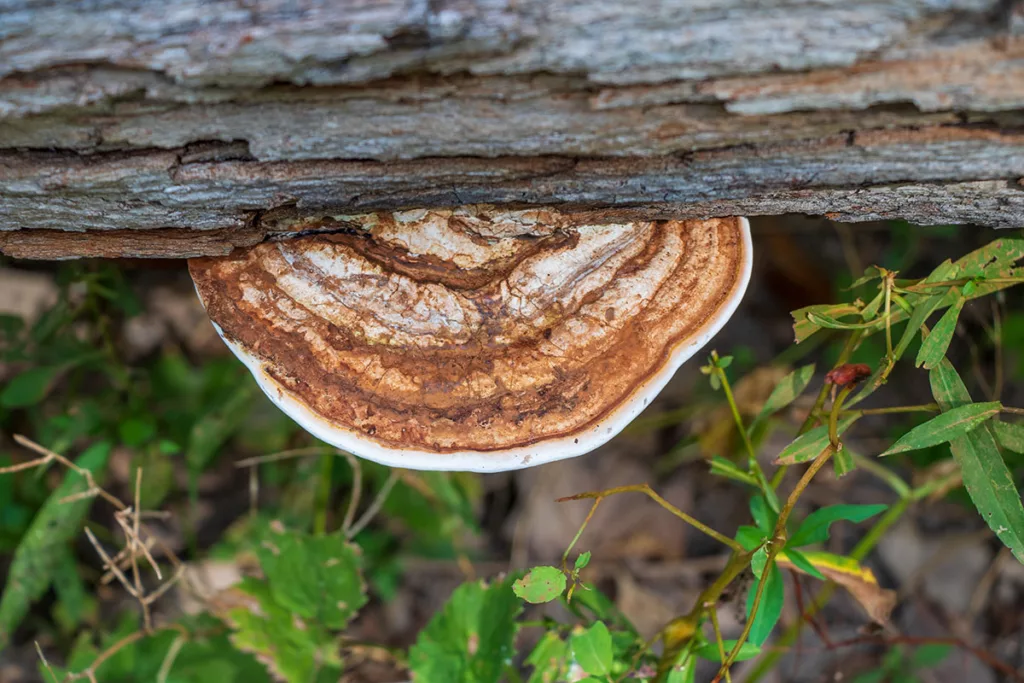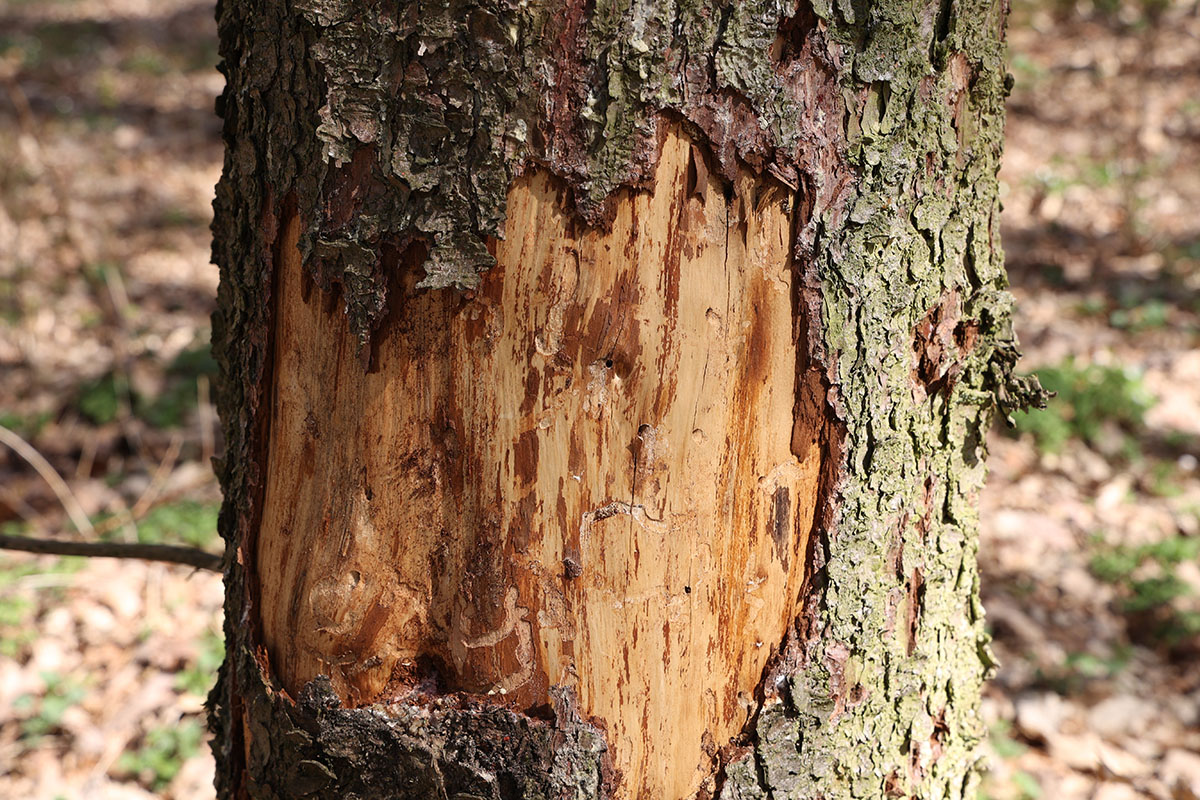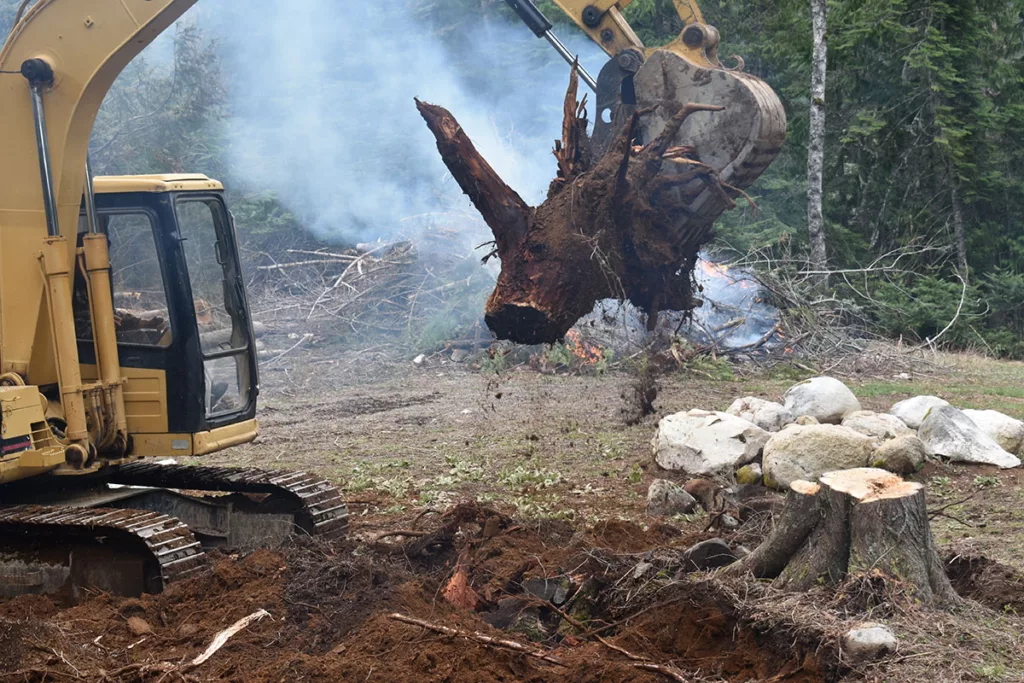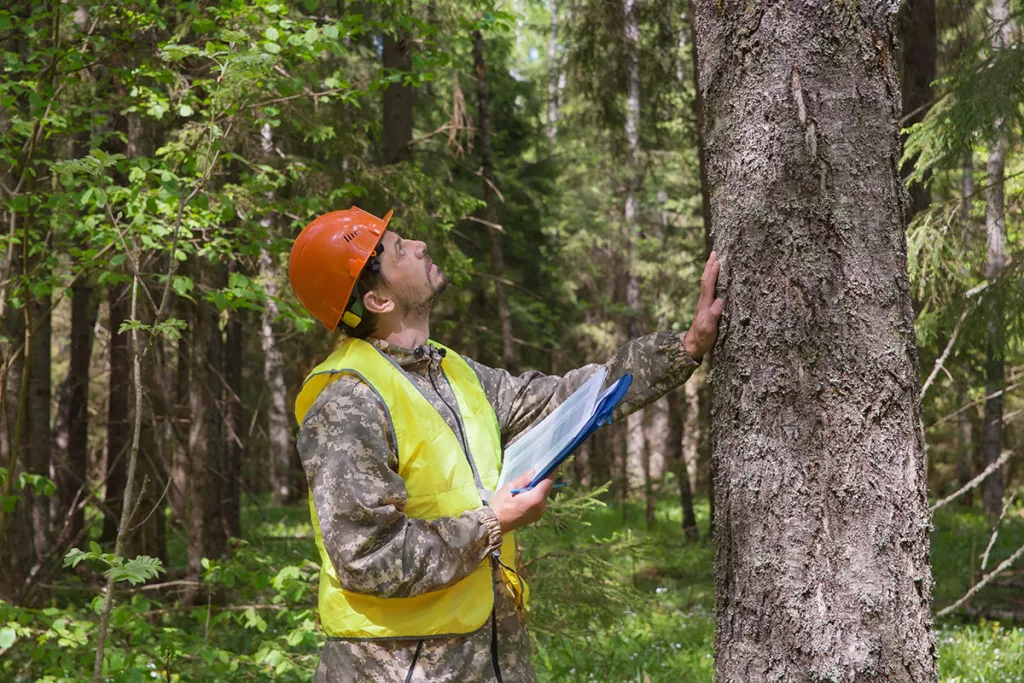It’s no secret that many tree species require routine upkeep to maintain their health and your safety. However, to an untrained eye, it can be hard to tell the general health of a tree. Fortunately, a Tree Risk Assessment (TRA) is an easy way to make sure your trees are thriving as they should be. In this article we explore common signs that it’s time to schedule a tree risk assessment so you can ensure the health, safety, and beauty of the trees on your property for years to come.
What Is a Tree Risk Assessment (TRA)?
Before we dive deeper, what exactly is a Tree Risk Assessment?
A Tree Risk Assessment (TRA) is a professional consultation service that analyzes risks, hazards, or potential concerns related to your trees. A TRA is essential for making sure your trees don’t pose any safety issues to surrounding people or property. Tree Risk Assessments should be performed by trained and fully certified arborists who know how to identify tree-related issues and can provide practical solutions. This helps promote general safety and the longevity of your tree’s lifespan.
What is a Tree Risk Assessment Report?
A tree risk assessment report is an inspection document that provides important details about the health, safety, and ongoing care plans of a tree. The report details the inspection of the tree itself, along with the surrounding environment and any alterations that may have occurred. Your arborist will make observations regarding the proximity to buildings and other trees, the state of the soil and roots, recent damages, and any potential hazards. A tree risk assessment report helps ensure that the trees on your property are given optimal ongoing maintenance while also assisting in the identification of potential failure risks in the future.
The certified arborists here at Vintage Tree Care have lots of experience helping people like you find the answers they need. But how can you tell when it’s time to call an arborist for an assessment?
Here are some of the most telltale signs that it’s time to schedule a tree risk assessment.
1. Your Tree Has a Fungal Disease

Fungal diseases are some of the most common tree hazards. If your tree has fungal growth, this can cause a lot of issues for not only the tree, but the surrounding property as well. Fungal diseases can cause trees to decay, which often leads to potential hazards like fallen limbs. Arboreal fungal infections can also impact a tree’s root system, which compromises the tree’s overall structure.
Here are some of the most common types of fungal diseases that might be affecting your tree:
- Oak Root Fungus: Also known as Armillaria mellea, Oak Root Fungus is one of the most widespread causes of white tree rot in California. This fungus manifests in white shelf-like mushrooms, which can form at the base of your tree.
- Artist’s Conk: Ganoderma applanatum is a brown and white fungus with no stalks that can grow from the base of your tree. These fungi like to infect wounds and can eventually lead to white rot.
- Dyer’s polypore: Phaeolus schweinitzii, also known as velvet-top fungus, is a fan-like fungus that can infect your tree. These fungi are usually brown or ochre in color and can quickly grow past 10 inches (25 cm) in diameter. Once a tree is infected, a dyer’s polypore can cause brown rot, so they should be removed as soon as possible.
If you suspect your tree is experiencing fungal growth, it’s a good idea to call a certified arborist and schedule a TRA.
2. Your Tree Has a Pest Infestation

A pest infestation is another sign that you should schedule a TRA to get a treatment and care plan from a certified arborist. Like fungal infections, insect infestations are an indicator that your tree might be in poor health. These infestations can weaken your tree over time and cause issues with limb strength and the root system.
Here are some signs that your tree might have a pest infestation:
- The presence of insects: While it’s common to find bugs inhabiting trees, if you start to notice large populations of insects occupying the bark, this might be an indicator that your tree has an infestation.
- Bark discoloration: While bark discoloration can signify other tree health issues like fungal diseases, it can also mean that your tree is suffering from an insect infestation.
- Holes in bark: Some bark imperfections are always expected. But if you notice a consistent pattern of small holes in the surface of your tree, these might be exit holes, which could mean you’re dealing with an insect infestation.
Fortunately, with a tree risk assessment, one of Vintage Tree Care’s certified arborists can help you identify the problem and propose a solution that works best for you.
3. It’s Been 1 Year or More Since Your Last TRA
Tree risk assessments are recommended once a year or after any major weather event for the best level of risk management. This aids in early risk detection and management of potential failure risks and promotes the overall health and safety of the surrounding environment. Your arborists can recommend appropriate maintenance practices, such as pruning, fertilization, or disease management, to mitigate identified risks and ensure the overall well-being of the tree. Regular monitoring also allows for the tracking of any changes in risk factors over time, enabling adjustments in management strategies as necessary. Even if your tree appears to be healthy on the outside, the safest option is always to consult a specialist for a checkup as needed.
4. Soil Work Has Been Done Nearby

Another sign that you should schedule at TRA is if any soil work has been done in the general vicinity of your tree recently. This is because soil disturbances can weaken trees and make them prone to insect infestations, fungal diseases, or even falling. Common reasons for soil work include excavation and stump removal. Earthquakes and floods might also cause soil disturbances that can negatively impact your trees.
5. Your Tree Has Faced Weather Damage
Weather damage is another sign that your tree could benefit from a scheduled TRA with Vintage Tree Care. In Sonoma County, we experience a wide variety of weather events that can heavily impact your trees. Here are some common examples of weather-based tree damage that might signify it’s time for a professional tree risk assessment:
- Fire damage
- Wind breaks
- Lightning strikes
- Earthquake damage
- Flood damage
If your tree has experienced any of these types of weather-based damages, you should call a certified arborist as soon as possible to ensure all risks and hazards are properly assessed.
Schedule a Tree Risk Assessment with Vintage Tree Care
Diseases, infestations, and environmental factors like the weather can cause hazardous damage to trees. Recognizing the signs of poor tree health is critical when it comes to deciding when it’s time to schedule a Tree Risk Assessment.
Here at Vintage Tree Care, our arborists hold Tree Risk Assessment Qualification (TRAQ) credentials, so we bring an extra level of expertise to the table. Achieve peace of mind and schedule your next TRA today by contacting us online or giving us a call at (707) 495-4686.


